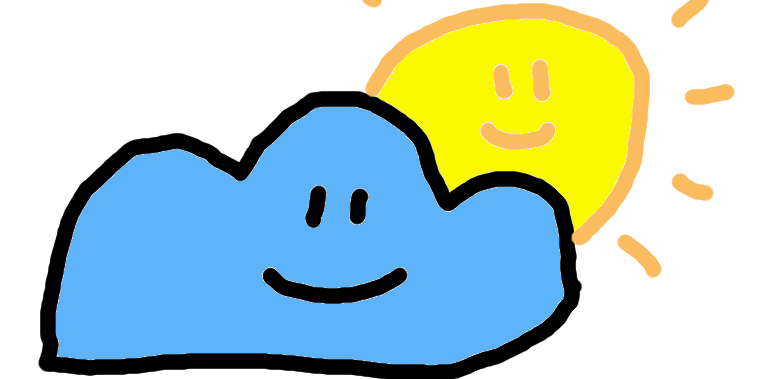What has been accomplished:
We have successfully created a three dimensional, repeating Worley noise texture with mixed densities, from which we may sample points to get a cumulative density probability function (more detailed explanation). Passing this function into a shader gives the effect of light diffusing through layers of varying densities, a step towards rendering light effects through clouds.
To accomplish this, we wrote functions to generate the vertices of the bounding boxes, populate each box with one randomly placed Worley point, and represent the distance from a given pixel to its closest Worley point as a density function.
Our GitHub repository is currently set to private. Please email one of our team members if you’d like to be added to our repository.
Thank you.
Preliminary Results:
The repeating Worley noise 3D structure functions as expected, with no discernible edges when we increase the number of cells. The raytracing effect currently does not fully resemble clouds, but it seems the visual effect is highly dependent on the user-supplied parameters. To alleviate this, we are exploring other ray tracing techniques including ray tracing on a quad in the fragment shader.
Reflection:
We originally anticipated completing the implementation of the Worley noise algorithm in 3D space, testing for object collision, and passing the sampling results into a shader along with environment textures by the end of the second week. We have managed to accomplish the implementation of the 3D Worley noise, pixel shading, and started exploration/evaluation of how to raytrace into the scene. Once we have successfully implemented raytracing in the fragment shader, we will explore mixing multiple levels of noise with weather maps to “draw” our clouds.
Update:
We have slightly stalled on the ray tracing phase – the visual effect presently is highly dependent on the various parameters – density, number of cells, size of bounding box, among others, that the user supplies. A natural next step for us is discovering which set of parameters yields the most consistent cloud-like effects, and how to maintain the rendering effect when changing the camera angle/origin of the ray-tracing rays. Finally, we will be exploring how the system interacts with environment textures like that of the moon or the sun, the most visually memorable reach goal of this project.
Additionally:
Please see our previous posts for more detailed progress steps:
